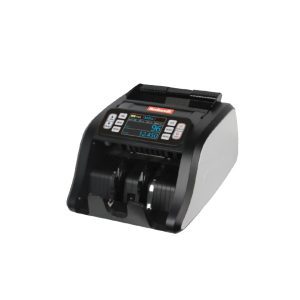
In the dynamic world of banking and finance, managing large volumes of cash efficiently and securely is paramount. Banking currency sorting machines have emerged as indispensable tools, revolutionizing how financial institutions handle cash. These machines automate the process of verifying, counting, and sorting banknotes quickly and accurately, ensuring that banks can meet the demands of their customers while maintaining operational efficiency.
How Banking Currency Sorting Machines Work
At their core, currency sorting machines utilize advanced technologies to automate cash handling processes. They are equipped with sensors and imaging systems that can detect various security features embedded in banknotes, such as ultraviolet (UV) markings, magnetic ink, and infrared (IR) patterns. This capability allows the machines to authenticate notes, ensuring that only genuine currency is processed. Additionally, these machines can sort banknotes by denomination, orientation, and condition (fitness), streamlining the cash handling process and reducing the risk of errors.
Key Benefits of Banking Currency Sorting Machines
-
Enhanced Accuracy and Reduced Human Error
Manual counting and sorting of cash are prone to human error, leading to discrepancies and potential financial losses. Currency sorting machines eliminate this risk by providing precise counts and sorting, ensuring accurate cash management -
Increased Efficiency and Time Savings
Processing large volumes of cash manually is time-consuming. Sorting machines can handle this task swiftly, allowing bank staff to focus on other critical activities, thereby improving overall productivity . -
Counterfeit Detection
Advanced sorting machines are equipped with counterfeit detection capabilities, identifying fake notes through various authentication methods. This feature protects financial institutions from potential losses due to counterfeit currency -
Improved Cash Flow Management
By sorting and organizing banknotes efficiently, these machines facilitate better cash flow management. Banks can quickly prepare accurate deposits, reducing the time spent on manual sorting and enhancing operational efficiency -
Cost Savings
While the initial investment in currency sorting machines may be significant, the long-term savings are substantial. Reduced labor costs, minimized errors, and improved efficiency contribute to overall cost savings for financial institutions
Applications in the Banking Sector
Banking currency sorting machines are widely used in various applications within the banking sector:
-
Teller Operations: Streamlining cash handling at teller counters, reducing wait times for customers.
-
Cash Centers: Processing large volumes of cash deposits and withdrawals efficiently.
-
Automated Teller Machines (ATMs): Ensuring that ATMs are stocked with genuine and correctly sorted banknotes.
-
Cash-in-Transit Services: Facilitating secure and efficient transportation of cash between locations.
Conclusion
In conclusion, banking currency sorting machines play a crucial role in modernizing cash handling processes within the banking and finance industry. Their ability to enhance accuracy, increase efficiency, detect counterfeit currency, and improve cash flow management makes them invaluable assets for financial institutions. As the demand for efficient and secure cash handling continues to grow, investing in advanced currency sorting machines is a strategic move for banks aiming to stay competitive and meet the evolving needs of their customers.


